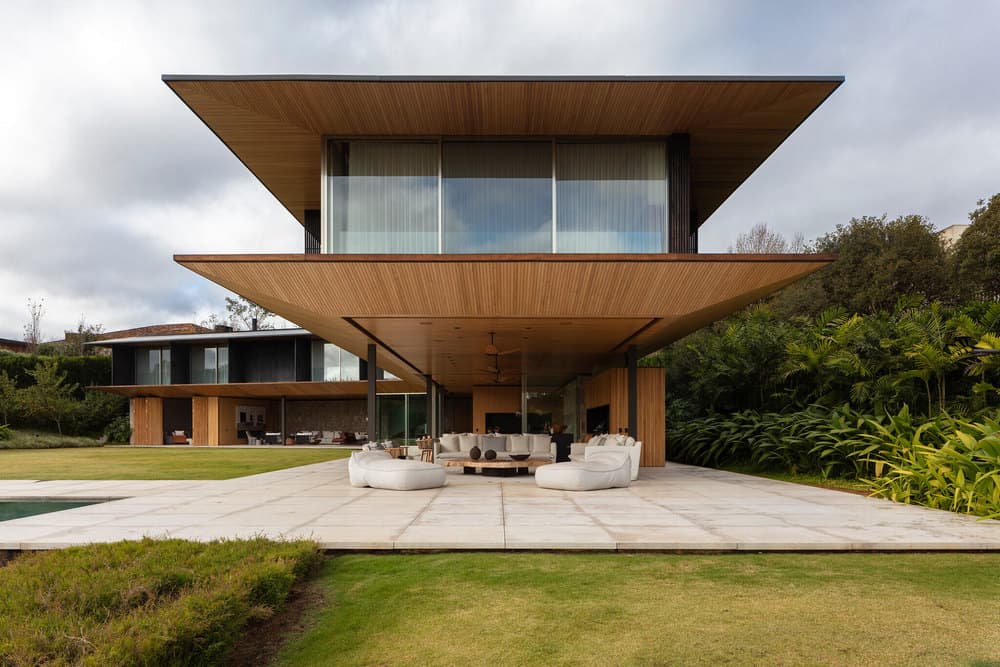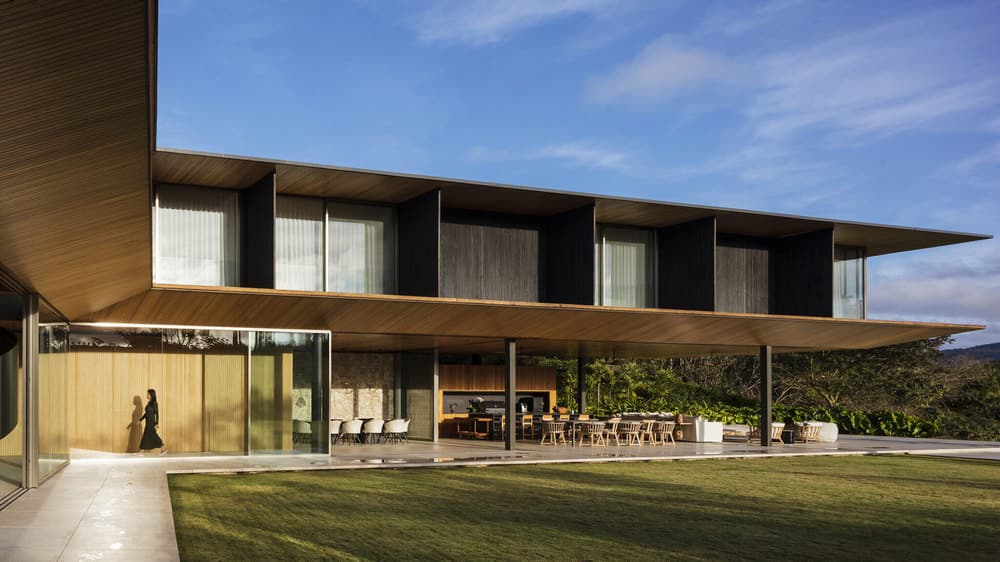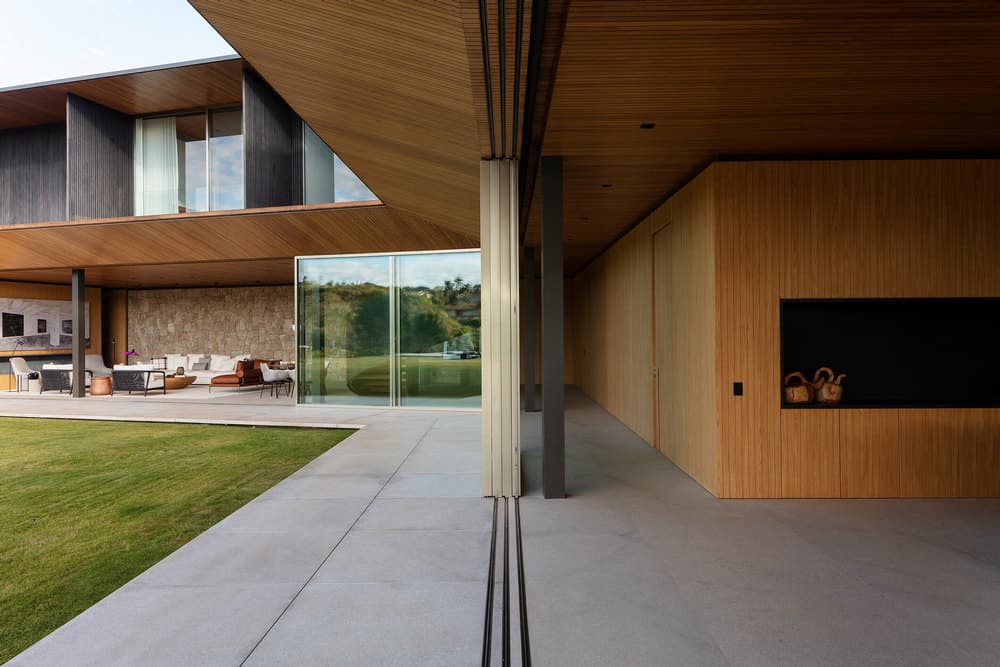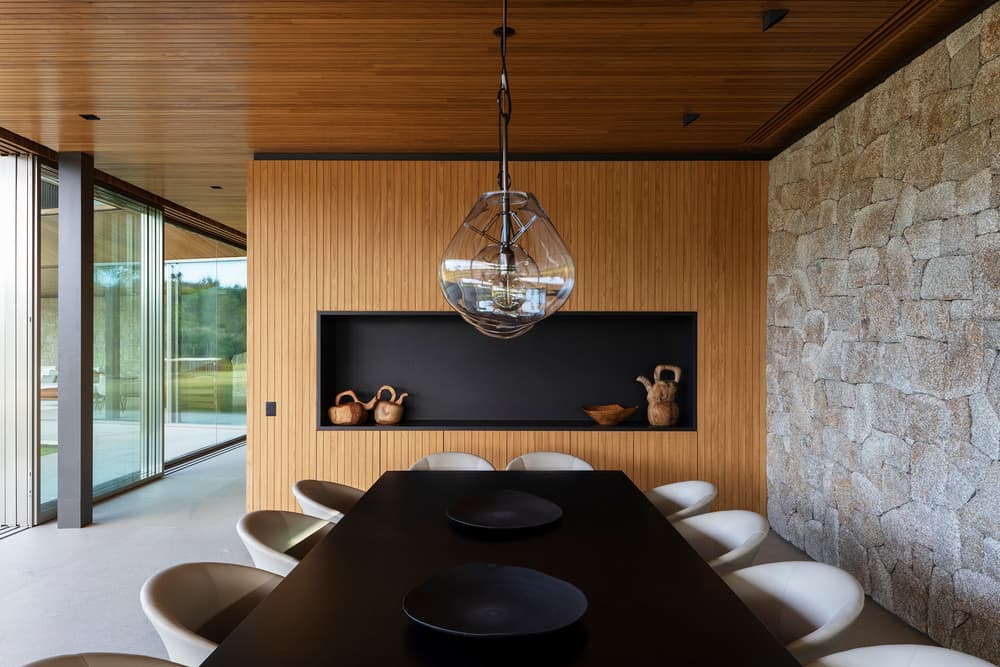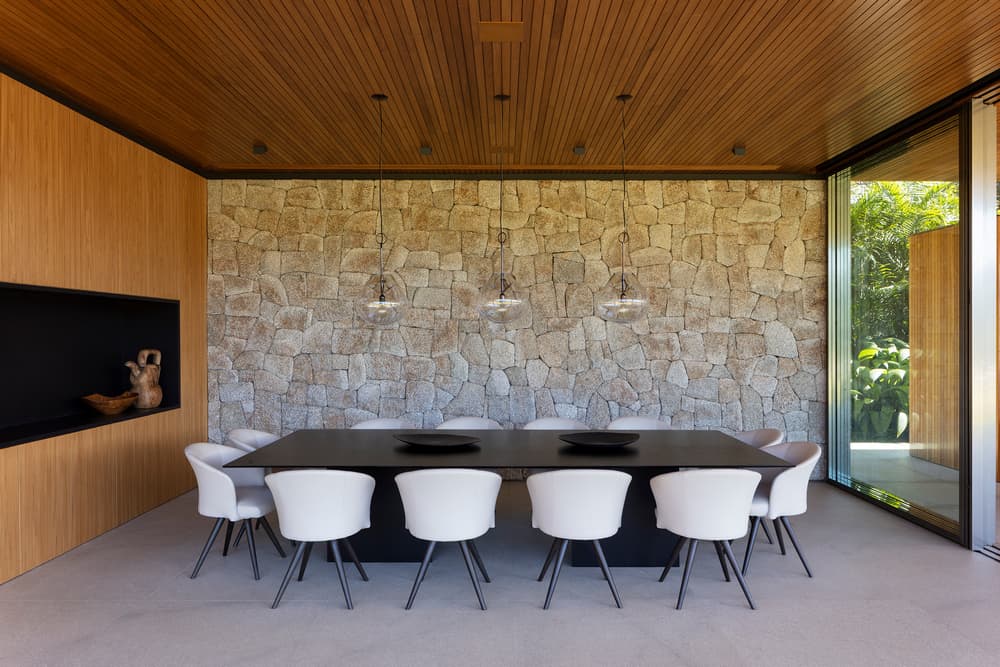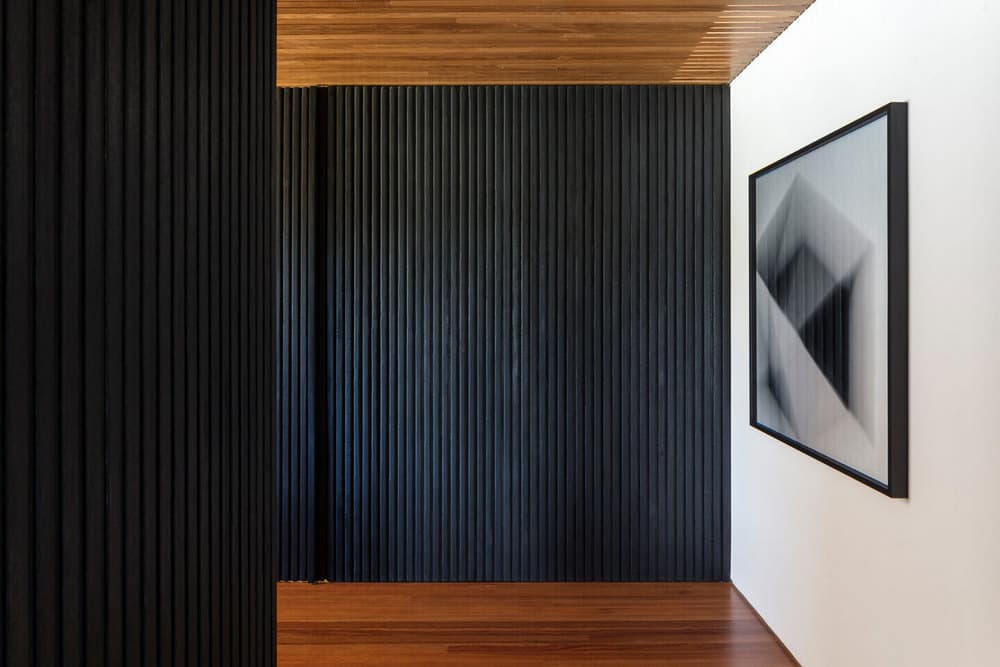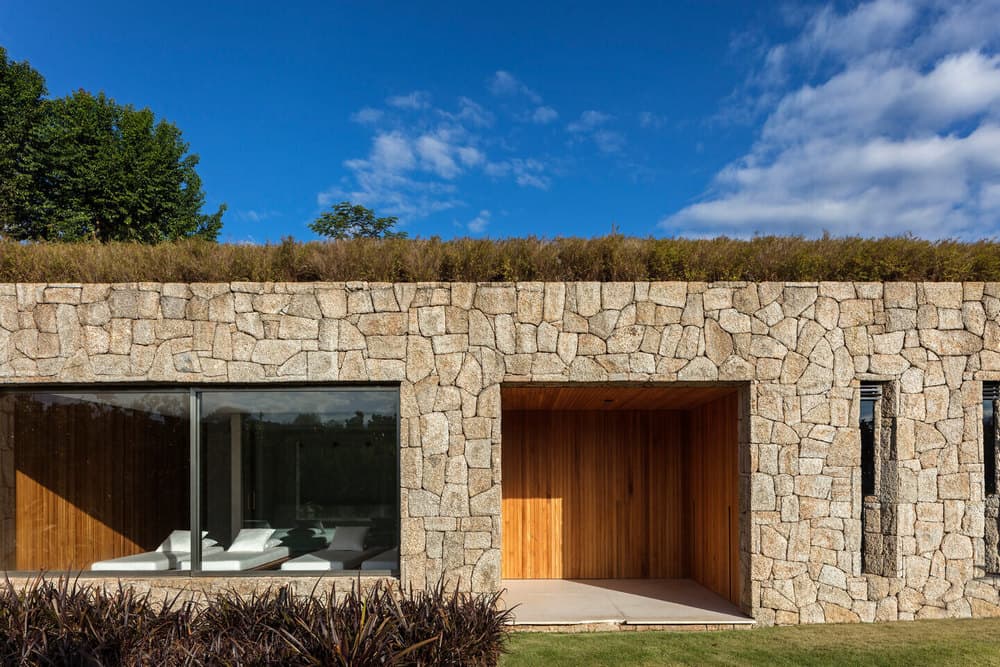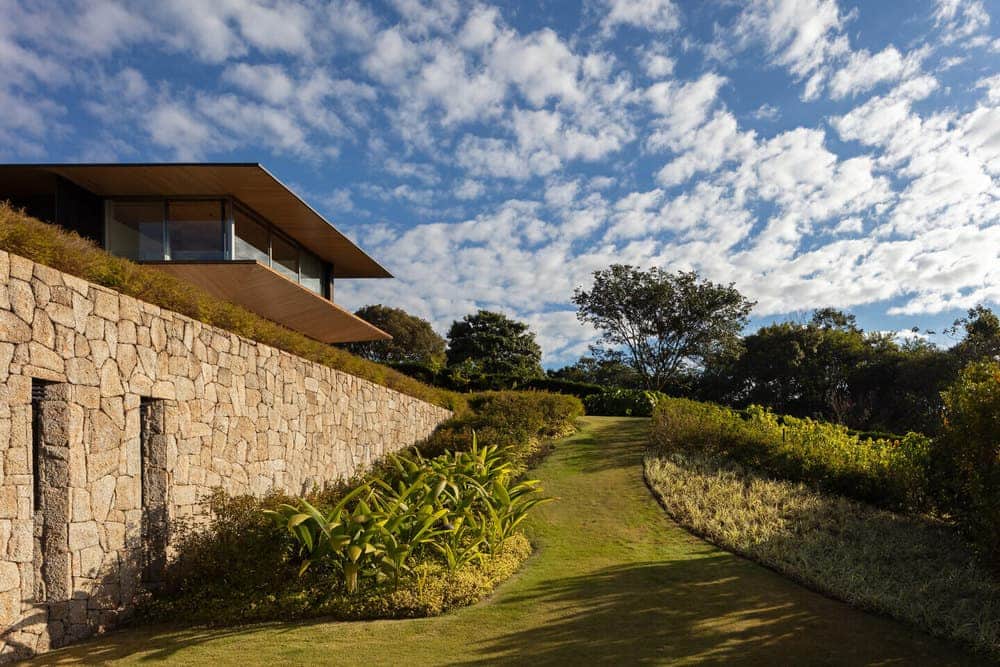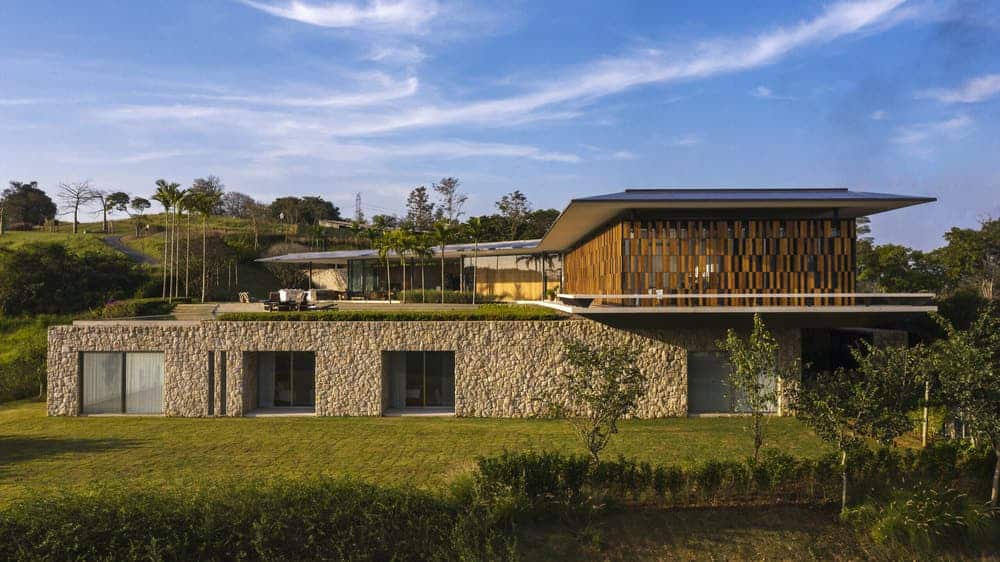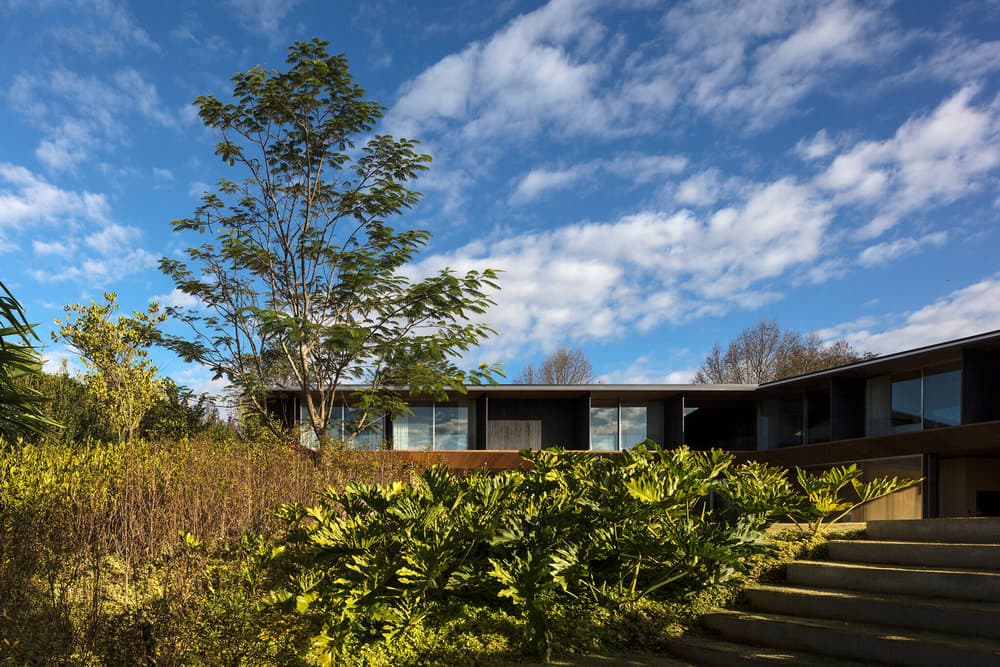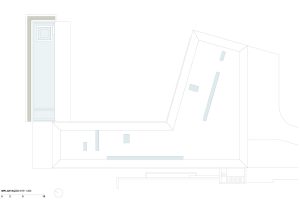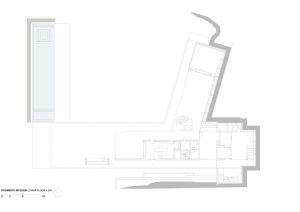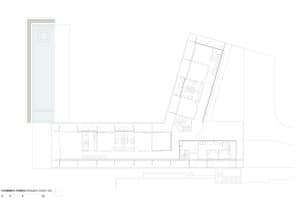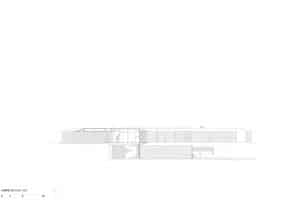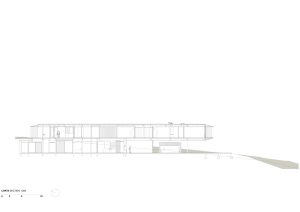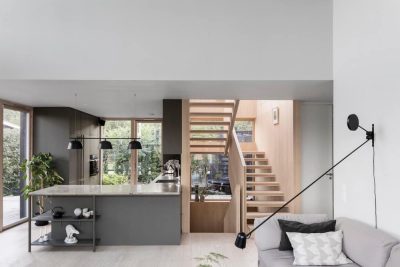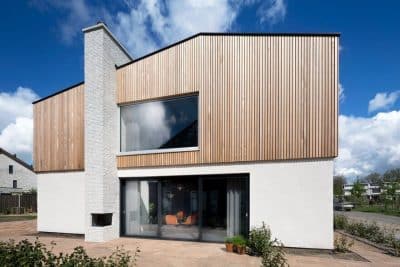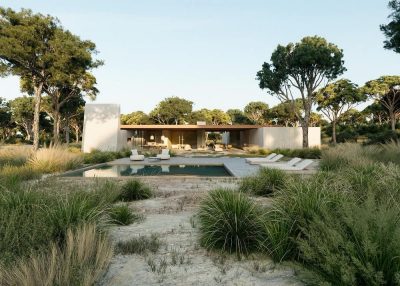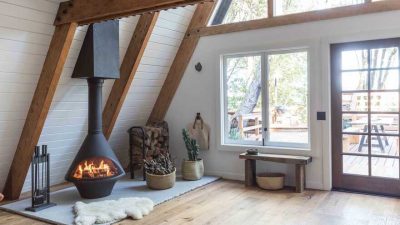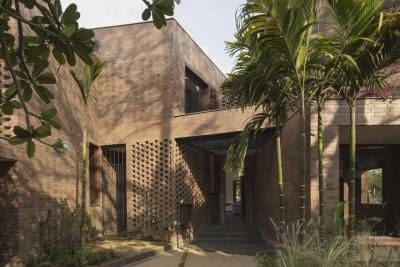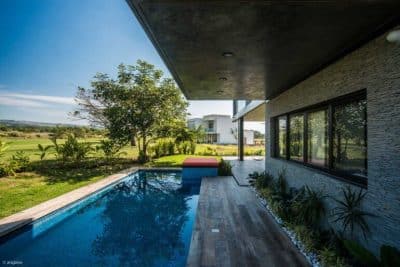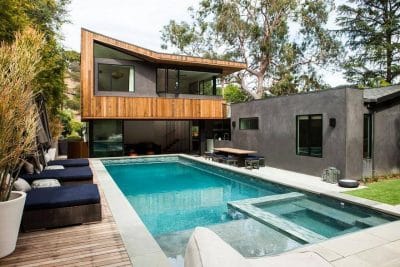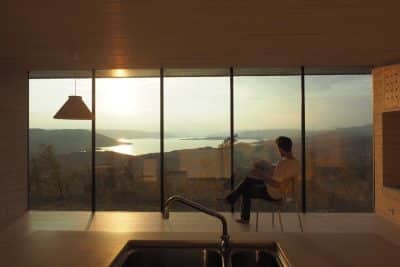Project: CL House
Architects: Jacobsen Arquitetura
Team: Paulo Jacobsen, Bernardo Jacobsen, Edgar Murata, Marcelo Vessoni, Marcela Siniauskas, Fernanda Maeda, Frederico Sabella, Alan Cruciti, Marina Budib, Fabio Fridman, Daniel Arce, Bianca Pastore
Interior Design: Débora Aguiar Arquitetos
Location: Bragança Paulista, São Paulo, Brazil
Build Area: 1600m²
Photo Credits: Leonardo Finotti
Text by Jacobsen Arquitetura
The architectural design conceived for the CL House, that would house a young couple, seeks to highlight the magnificent views of the lake and forest reserve present in the implantation site. Given the specific natural condition of the terrain, we sought to orient most of the house’s environments to the stunning landscape. The house was implemented on a slight downhill, located in the end of a tree-lined street, with neighbors on both sides. One of the main challenges faced by the project was to find the ideal level for positioning the residence: one that would suit the natural topography of the land, while allowing full visualization of the lake’s water depth.
The implantation of the building in a “Y” shape, with a non-orthogonal character, sought to orient the openings of the rooms towards the main view; also ensuring privacy in relation to the neighboring buildings, which are parallels to the side limits of the lot. The layout of the volume prioritized the central occupation of the land, creating a large garden that gently descends towards the entrance level, limited by the infinity pool. Based on this solution, the construction itself builds the unevenness of the land, creating a ground floor on the access façade that unfolds into a two-story volume on the inner portion of the lot, facing the main garden.
The design approach adopted for this project prioritizes, as much as possible, the integration between interiors and exteriors. The creation of living areas connected to the environment and the closing of the residence with sliding and transparent glass plans are strategies that contribute to continually redefine the concepts of “inside” and “outside”. Another architectural solution that deserves mention was the accentuated extension of the eaves on the upper and lower floors. The notable upward inclination of these elements alludes to traditional Japanese architecture, contributing to accentuate the feeling of lightness proposed to the building. In addition to protecting the building from direct sunlight incidence, the eaves also increase the feeling of privacy and contribute to extend the interior spaces towards the exterior.
The residence ́s entrance takes place from the top floor. The main entrance hall separates the family bedrooms from the guest area. Descending a spiral staircase, it is possible to access the social area of the residence, where the living rooms and the home theater are located on one side, despite the kitchen, the dining room, and the balcony, are positioned on the other side. In this respect, the staircase is presented as the main architectural element responsible for the sectorization of the project, towards which all areas of the house converge. On the lower floor, the private SPA for the residents was installed, aligned with the emptiness of the pool aiming to integrate with the extension of the garden plan on the ground floor.
The palette of materials chosen for the CL House seeks the contextual integration with the place, prioritizing the intentional contrast between colors and textures, in addition to highlighting aspects of the building’s programmatic distribution. In fact, the application of the so-called ‘bolão’ stone on the walls, granite on the social floors and green volcanic stone on the pool areas stands out. In the ceilings, we adopted ‘freijó’ wood and, in the dormitory floors, oak wood. For the façade panels, the traditional Japanese technique of carbonized wood was applied, combining a handcrafted production method with the contemporary aesthetic language sought for the project.

